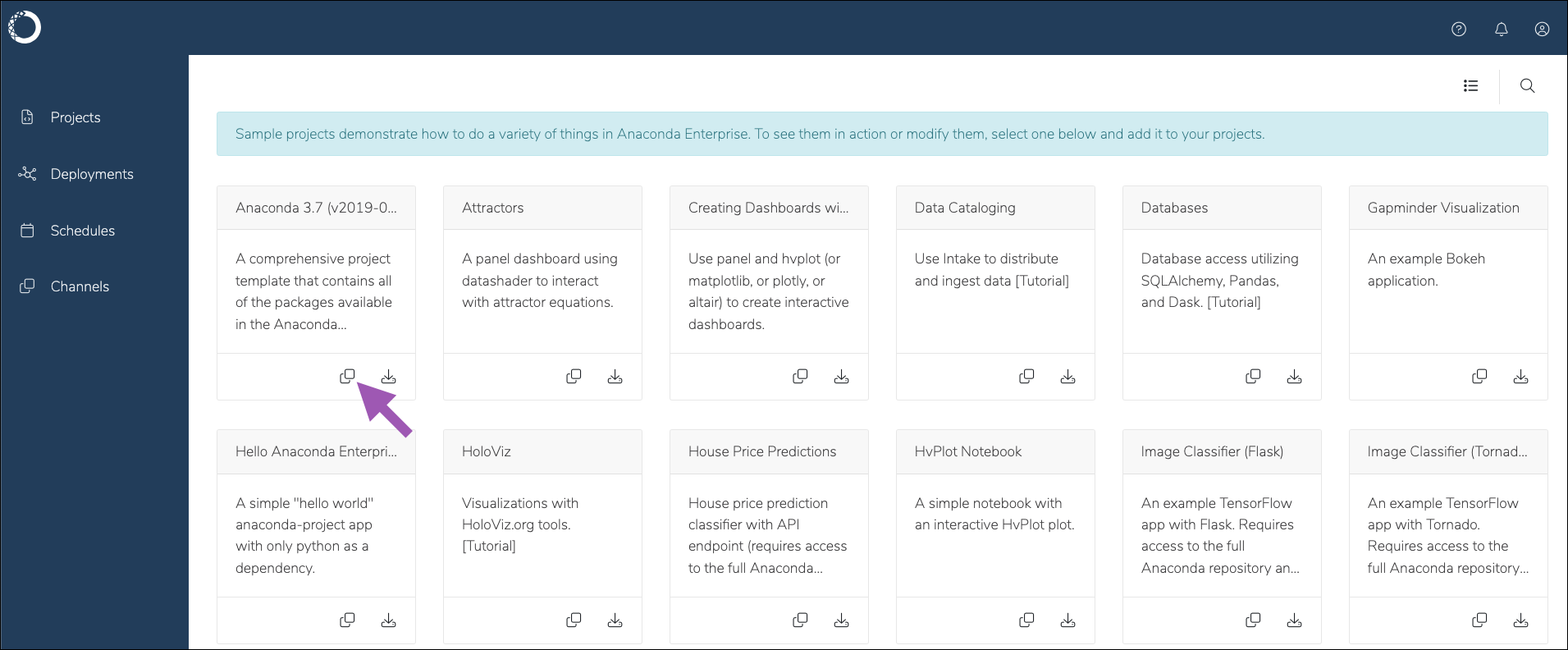Anaconda Enterprise uses projects to contain all of the components needed to use or run an application. This includes relevant packages, channels, scripts, notebooks, files, environment variables, services and commands, and a core configuration file named anaconda-project.yml. For more information, see Developing a project.
Project components are archived into a .tar.bz2, .tar.gz, or .zip file for portability purposes, allowing you to store the project and share it with others.
Creating a new project
-
From the projects page, click Create +, then select New Project.
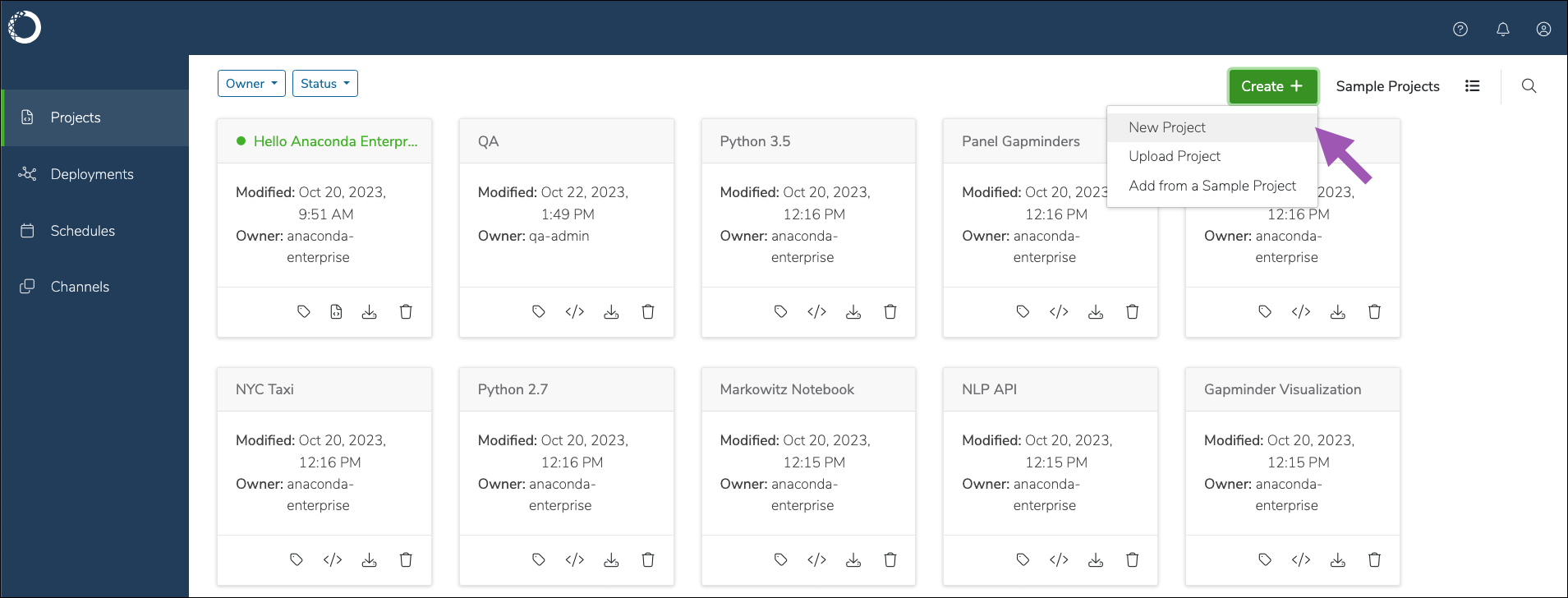
-
Enter a name for your project.
-
Select an environment for your project.
-
Select a resource profile for your project.
-
If necessary, add any users or groups as collaborators.
-
Click Create.
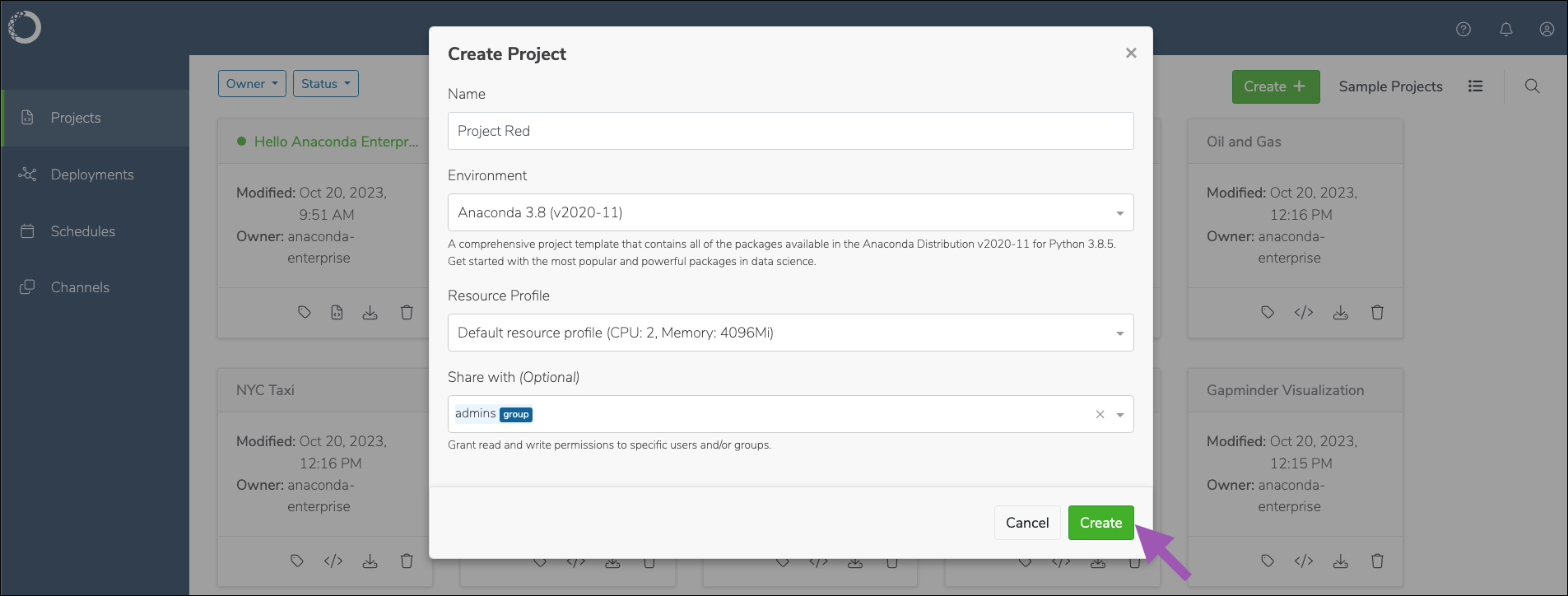
Uploading an existing project
-
From the projects page, click Create +, then select Upload Project.

-
Click Browse and upload your project archive file to Anaconda Enterprise.
-
Enter a name for your project.
-
If necessary, add any users or groups as collaborators.
-
Click Upload.
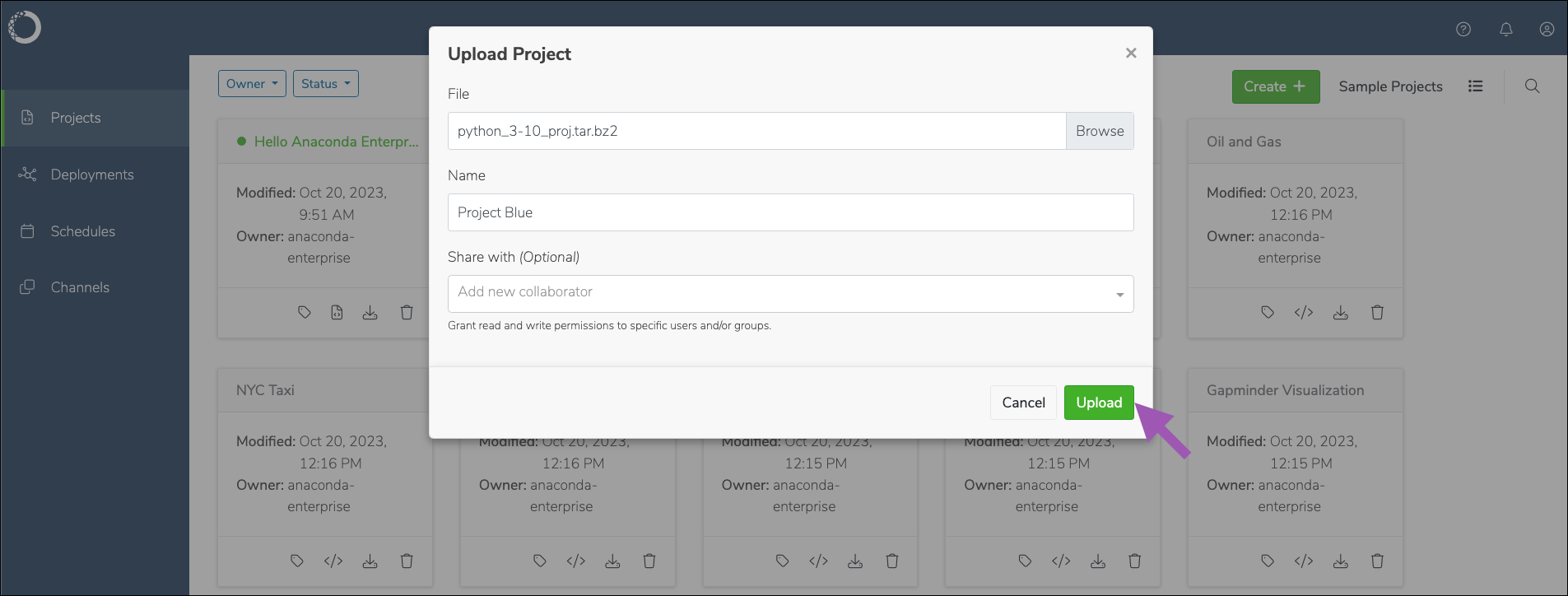
Using sample projects
Anaconda provides you with a gallery of sample projects that include:
- Several base Anaconda Distribution for Python environments
- Minimal Python environments
- R notebooks and R Shiny apps
- Simplified Jupyter Notebooks for Matplotlib and HvPlot
- Dashboards for the Gapminder dataset, oil and gas, NYC taxi, and attractor equations
- TensorFlow apps for Flask, Tornado, and MINST trained data
- And tutorial projects for:
- Using Intake to distribute and ingest data
- Database access using SQLAlchemy, Pandas, and Dask
- Visualizations with HoloViz.org tools
- Building time-series forecasting models using statsmodels
These projects are intended to aid you with your own projects by demonstrating how to do a variety of things in Anaconda Enterprise.
To access the sample project gallery, navigate to the Projects page, then click Sample Projects.
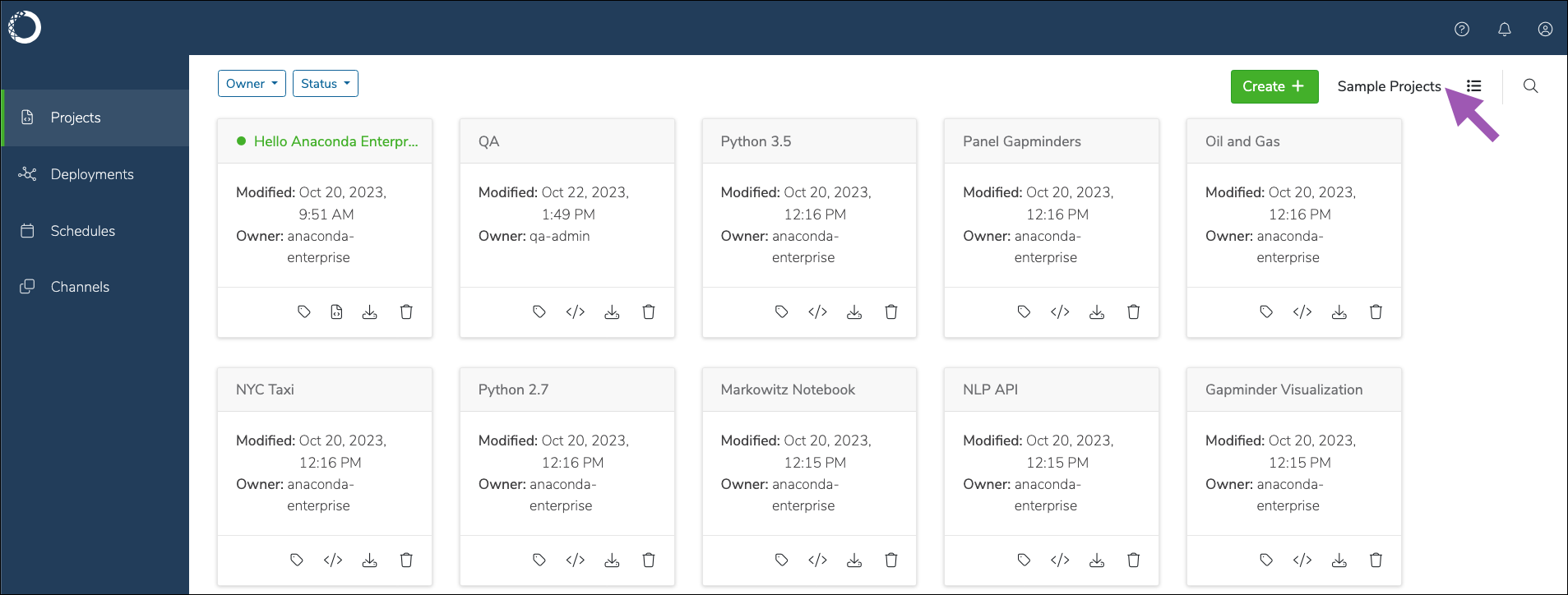
To add a sample project to the projects page, click the clone icon for any project.
